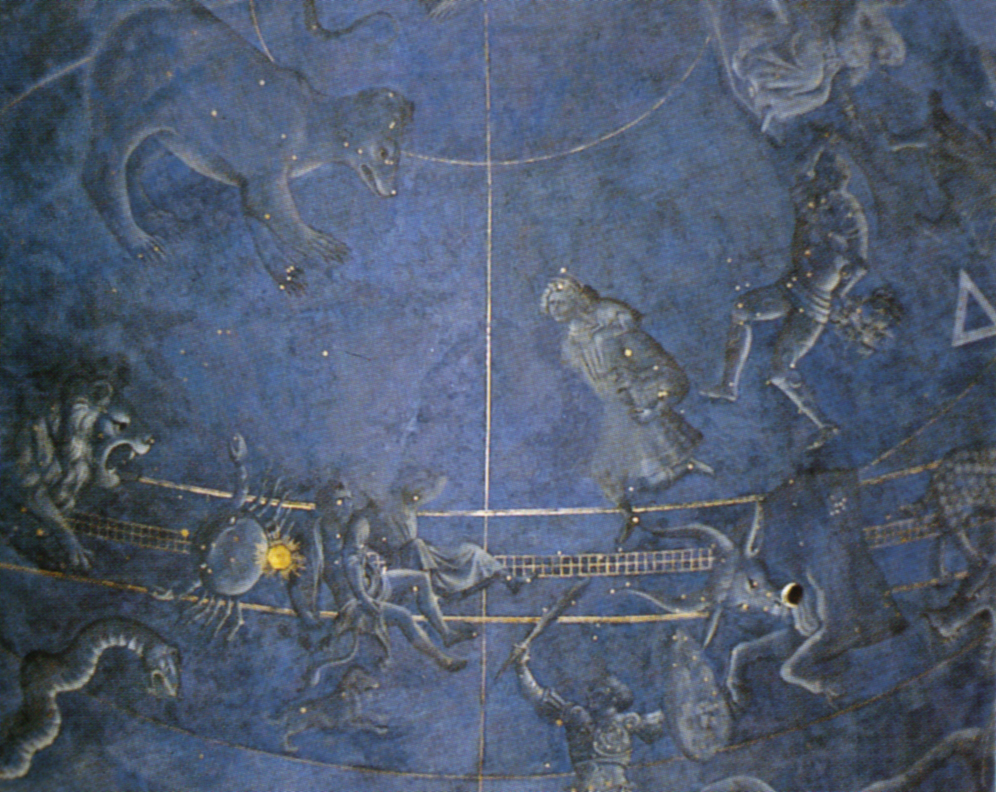| |
|
The Pazzi Chapel in Santa Croce church in Florence is considered one of the cornerstones of Renaissance
architecture, and to most scholars, it marks one of the highlights of the career of the great architect Filippo
Brunelleschi.
Though funds for the chapel were assembled in 1429 by Andrea Pazzi, head of the Pazzi family, whose wealth was second only to the Medici, construction did not begin until about 1442. The chapel was completed in 1443, after Brunelleschi's death. The building is considered to be an Early Renaissance masterpiece.
The main purpose of the building was the cathedral chapter house (meeting room for the governing chapter) and use as a classroom for the teaching of monks and other religious purposes. The chapel was a physical representation of the Pazzi family's power, wealth, piety, generosity, and status.
Between 1422 and 1428, Brunelleschi worked on the Medici burial ground thereafter called the Old Sacristy of San Lorenzo, which was the first accomplished cultural and artistic message of the early Renaissance: this was indeed the first construction in which, thanks also to reflection on classical art, architectural space was restored to a human scale.
It was Aby Warburg who first asked if the arrangement of the constellations was astronomically accurate and if it represented a particular date. Relying on the computations of a Hamburg astronomer, he concluded in an article in 1911 that the fresco must comemmorrate the consecration of the high altar of San Lorenzo on 9 July 1422, the date cited in an 18th century pilgrims guide.[2]
Astrological symbols were not only used to convey mythological, archetypal messages, but also served specific purpose when illustrated in a precise locational order. The symbols, replete with constellations and planets, are shown in relation to time and space. The cupola that stands over the altar in the Old Sacristy of San Lorenzo shows the stars as they appeared in Florence in the early fifteenth century (medici, 166). There are two interpretations of the exact date portrayed in the painting. One states that the date depicted is July 9th, 1422, which is the supposed date of the consecration of the of the high altar of San Lorenzo. The other is July 6th, 1439, the day the union of the Greek and Western churches was proclaimed at the closing session of the Council of Florence. [3]
|
|
Il Pesello, particolari della cupoletta della scarsella, Cappella Pazzi, Basilica di Santa Croc, Firenze [4]
|
The dome fresco in Santa Croce’s Pazzi Chapel depicts the same sequence of zodiac symbols as the Old Sacristy, which has caused some scholars to dismiss the theory that the dates shown are to commemorate San Lorenzo’s high altar. Both frescoes align the astronomical north with the geographical north, allows for an astronomical reading to be done for the intact imagery of Old Sacristy, but unfortunately the deteriorating state of the Pazzi dome fresco makes it impossible for a full analysis to interpret the exact date. The coordinate lines are visible but the Sun, Moon and stars cannot be seen at all, but because the existing half mirrors Old Sacristy exactly, we can assume the dates represented in the two frescoes are the same.[3]
|
|

Il Pesello (attr.) emisfero celeste, 1442 circa, sagrestia vecchia, Firenze [5]
|
The Sagrestia Vecchia di San Lorenzo is the older of two sacristies of the Basilica of San Lorenzo in Florence. It is one of the most important monuments of the early Italian Renaissance architecture.[1] The smaller dome above the altar is decorated with astrological depictions of star constellations. The arrangement of the constellations is accurate enough to estimate the particular date they represent, although there has been disagreement on the intended date represented there. In 1911, Aby Warburg first made an attempt with the help of a Hamburg astronomer and concluded that the date was the July 9, 1422, the date of the consecration of the altar. Gertrud Bing later rejected this in favor of a calculation by Arthur Beer for July 6, 1439, the date of the closing session of the Council of Florence, in which the Articles of Union between Eastern and Western Christendom were signed by Latin and Greek delegates. More recent recalculation by Professor John L. Heilbron has independently confirmed this date and even estimated the time of day at about noon.[7]
|
|
|
|
| |
|

Florence, Pazzi Chapel, photo gallery
|
|
|
 |
|
 |
|
 |
Capella Pazzi
|
|
Capella Pazzi, interior |
|
Cappella Pazzi, cupoletta della scarsella,
Basilica di Santa Croce
|
| |
|
|
|
|
| |
|
|
|
|
 |
|
|
|
|
Transport
Timetables and routes - ATAF | Map
You can view the bus routes at the Florence transit site: www.ataf.net/en/ataf.aspx?idC=2&LN=en-US
|
|

|
| |
|
|
|
Bus trasport in Florence
|
Bibliography
Mary McCarthy, The Stones of Florence, Harcourt Brace International (1998), ISBN-10: 9780156850803 - ISBN-13: 978-0156850803
De Marchi, Pirazzoli (editors), Santa Croce - Oltre le Apparenze, Pistoia 2011
|

[1 Foto di Traveling in Tuscany | www.travelingintuscany.com
[2] Patricia Fortini Brown, Laetentur Caeli: The Council of Florence and the Astronomical Fresco in the Old Sacristy, Journal of the Warburg and Courtauld Institutes, Vol. 44 (1981), pp. 176-180 | www.jstor.org/stable/751062?seq=1
[3] Abigail Rubin, Astronomy and Astrology in Renaissance Florence, Florentine Art & Culture,
[4] Foto di Sailko, licenziato in base ai termini della licenza Creative Commons Attribuzione-Condividi allo stesso modo 3.0 Unported
[5] Source: Elena Capretti, Brunelleschi, Giunti Editore, Firenze 2003., Public Domain.
[6] San Lorenzo. Encyclopædia Britannica. 2007.
[7] Brown, Patricia Fortini (1981). "Laetentur Caeli: The Council of Florence and the Astronomical Fresco in the Old Sacristy". Journal of the Warburg and Courtauld Institutes. The Warburg Institute. 44: 176–180. JSTOR 751062.
|
° This article incorporates material from the Wikipedia article Pazzi Chapel, published under the GNU Free Documentation License. |
|
|